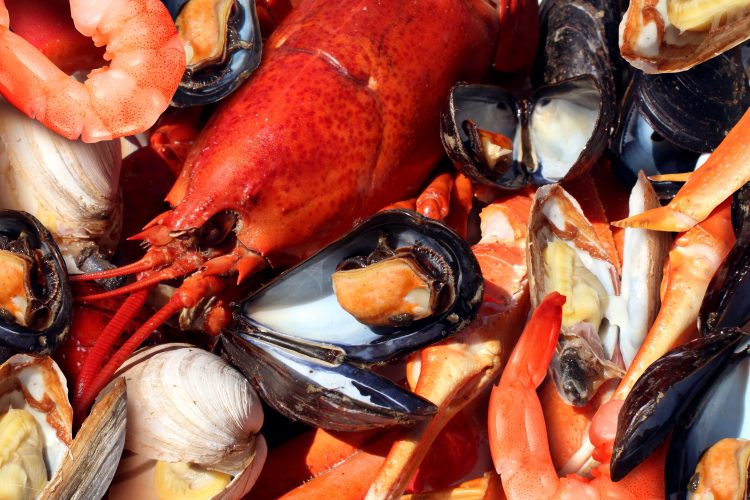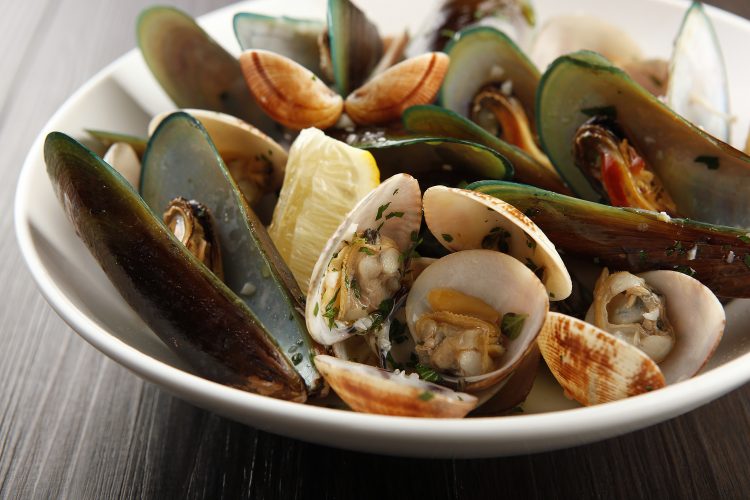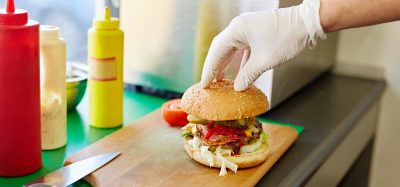A schooling on marine biotoxins
Posted: 25 June 2020 | Bethan Grylls (New Food) | No comments yet
The Head of the Food Safety and Quality Unit at the Food and Agricultural Organization of the United Nations (FAO) talks marine biotoxins with New Food’s Editor, Bethan Grylls.


Marine biotoxins are naturally occurring chemicals produced by algae that grows in fish and shellfish. These toxins can cause diarrhoea, amnesia, paralysis or even death in severe cases. To protect consumers, regulatory authorities have set limits for allowable biotoxin levels in seafood.
Typically, biotoxins start in molluscs, which filter water and ingest biotoxin-producing phytoplankton; these cause no harm to the molluscs, but as bigger fish eat them, they can become infected with these biotoxins. As these fish are eaten by still larger marine life, they too become infected, and so on. If infected fish finds its way into the human food supply chain, it can have mild to devastating consequences.
Although our understanding of marine biotoxins has improved significantly, we are still unsure of how many variations exist. “We have created tools, analytical chemistry, that enable us to identify the different substances and we can even classify them by the kinds of reaction they cause,” Dr Markus Lipp, a Senior Food Safety Officer and Head of the Food Safety and Quality Unit at the Food and Agricultural Organization of the United Nations (FAO), told New Food.
Marine biotoxins are naturally occurring chemicals produced by algae that grows in fish and shellfish. These toxins can cause diarrhoea, amnesia, paralysis or even death in severe cases. To protect consumers, regulatory authorities have set limits for allowable biotoxin levels in seafood.
Typically, biotoxins start in molluscs, which filter water and ingest biotoxin-producing phytoplankton; these cause no harm to the molluscs, but as bigger fish eat them, they can become infected with these biotoxins. As these fish are eaten by still larger marine life, they too become infected, and so on. If infected fish finds its way into the human food supply chain, it can have mild to devastating consequences.
Although our understanding of marine biotoxins has improved significantly, we are still unsure of how many variations exist. “We have created tools, analytical chemistry, that enable us to identify the different substances and we can even classify them by the kinds of reaction they cause,” Dr Markus Lipp, a Senior Food Safety Officer and Head of the Food Safety and Quality Unit at the Food and Agricultural Organization of the United Nations (FAO), told New Food.
“Generally, we have a very good understanding of these molluscs; fishermen know where the bacteria can and cannot occur. For example, if a coral reef is dying it can trigger events that result in these organisms – the algae – producing. There are also certain fish species that have a higher potential to trigger and accumulate these chemicals.
“Our historical knowledge is sufficient to mostly avoid these biotoxins, but there are still groups of chemicals that remain an enigma; we do not yet have a comprehensive understanding of their chemical structure.”
“Generally, we have a very good understanding of these molluscs; fishermen know where the bacteria can and cannot occur”
Citing ciguatoxins as an example; this marine biotoxin is the most common cause of fish foodborne illness and is composed of 50 or more atoms. Despite basic understanding of these molecules’ appearance, scientists lack the necessary depth of structural information to ascertain its presence and measure precise levels.
Ingesting marine biotoxins can have a moderate to severe reaction in humans, depending on the type and amount of food consumed. “In most cases, the effects are reversible. However, there is a possibility for chronic effects to occur that remain with the patient.”
Despite European legislation limiting allowable levels of biotoxins in fish, the Food Standards Agency (FSA) states: “The uptake of biotoxins by shellfish is highly variable, therefore even when official control monitoring indicates that the levels present in an area are below regulatory limits, there may be occasions when harvested product could still lead to illness. This is a particular risk during the summer months when phytoplankton blooms are most prevalent. For this reason, it is important that FBOs are aware of the biotoxin status of their harvesting area and ensure that they are responding appropriately to control the potential risk that may be associated with their product.”1
“Chemical analysis is a costly and extremely complex process; this is why we place such emphasis on harvesting shellfish in areas where these chemicals cannot (easily) occur,” Dr Lipp added.
Testing for marine biotoxins
Previously, testing for marine biotoxins involved a rather crude process whereby an extract sample was injected into mice via the peritoneum. The time it took the mouse to die would then be recorded, providing an estimate of the total toxicity of the extract.
The test, known as mouse bioassay (MBA), not only raised ethical issues, but research also demonstrated that there is no correlation between acute toxicity and MBA results.2
Since then, chemists have successfully isolated pure samples of shellfish toxins for use as analytical standards. The development of techniques such as LC-MS has enabled individual concentrations of toxin congeners in a shellfish extract to be determined accurately.2
“Previously, testing for marine biotoxins involved a rather crude process whereby an extract sample was injected into mice via the peritoneum”
However, a joint technical paper by the FAO and the World Health Organization (WHO) also stressed the need for Toxicity Equivalency Factors (TEFs) alongside methods such as LC-MS. According to the paper, knowing the amount of toxin congeners (one of two or more substances related to each other by origin, structure or function) is not enough; knowledge of the relative toxicity of each of the congeners is needed, to enable total toxicity of the material to be estimated.
The paper2 reads: “This requires the determination of TEFs, defined as the toxicity ratio of a compound from a chemical group that shares the same mode of action of a reference compound in the same group.3 The toxicity of the congener is expressed as a fraction of the toxicity of the reference compound in terms of potency, which is a pharmacological parameter that defines the amount of compound required for a certain effect.”2
Although the paper emphasises the use of TEFs, it also points out that in marine foodstuffs it can prove difficult to employ. For example, it has been hard to obtain the required quantities of the compound to carry out acute oral toxicity studies in animals. The FAO and WHO, therefore, conclude that the most appropriate TEF is one that identifies the potency of each congener of the same toxic group in the specific organ or system where the toxicity is reported, relative to a defined compound.2
“The preference is that we manage the problem much earlier in the supply chain,” Dr Lipp said. “For example, by measuring the amount of algae in the water and setting a suitable limit. The safe amount of algae will obviously vary country-by-country and depend on water conditions, so there can’t be one set limit; it will need to be adjusted accordingly.”


Dr Markus Lipp recommends managing marine biotoxins much earlier in the supply chain, for example by measuring the amount of algae in the water before fishing in that area
“The regulations surrounding marine biotoxins continue to develop,” Dr Lipp said. “It’s a dynamic field and scientists are still learning. Regulators are also still trying to wrap their heads around it all.
“Seafood remains one of the most highly traded commodities – farmed and exported on a global scale – and that makes testing difficult too; to manage and control such a large supply chain!”
Despite there being knowledge gaps, Dr Lipp seemed optimistic, describing the situation as “fairly under control”. However, he did note one long-term consideration that may exacerbate the issue of biotoxins – climate change. “As the sea temperature changes it can offer optimal conditions for biotoxins to thrive in. It is important for countries to understand the changes that this will bring and how we can best prepare for a future that will be very different to today.”
He also highlighted water pollution as another issue to bear in mind, as it provides algae a suitable environment in which to grow, hence more biotoxins. “For chemical toxins decontamination is difficult and, in most cases, impossible,” he added. “So unlike viruses which can generally be killed with heat, once a chemical is in the food, it stays there. It is, therefore, fortunate that industry has made the progress it has with analytical techniques. In the last two decades they have become more sensitive and affordable.”
To help combat the risk of marine biotoxins, the FAO and WHO have developed the Codex Alimentarius Commission (CAC), which is responsible for all matters regarding the implementation of the Joint FAO/WHO Food Standards Programme. Membership of the Commission is open to all Member Nations and Associate Members of FAO and WHO that are interested in international food standards. The Commission meets annually and is funded through the regular budgets of WHO and FAO with all work subject to approval of the two governing bodies of the parent organisations.
“Seafood remains one of the most highly traded commodities”


“The CAC comes together and discusses the most prevalent issues – whether that’s marine biotoxins or something else – until we find a scientific consensus which we can all agree upon. In terms of marine biotoxins, there are so many different variants, so we will agree where attention is most urgently needed and what can be done to protect humans.”
He continued, “The best piece of advice I can give to those in the industry is know your supply chain; understand the risks that can occur and coordinate with those in your chain to minimise those hazards. We must continue to investigate new and better methods and improve our understanding of the chemical structure of the unknown biotoxins. It is also important to make all parties (regulators, consumers, fishermen, manufacturers, etc.) more aware of marine biotoxins because of the challenges that climate change and pollution present.”
As a last thought, Dr Lipp added, “We have spoken very negatively about seafood, so it is important to remind people that these negatives – when things go wrong – are the exception, not the rule. The industry supplies huge amounts of seafood on a daily basis that is safe for consumption. To ensure that foodborne incidents remain the exception, we must continue educating regulators, industry and consumers. Consumers must ask questions, they must not take the supply chain for granted; and the same goes for industry, we must all work together, so we can continue to enjoy what we currently have – that is, by and large, safe food – so when the exception does occur, we know how to fix it.”
References
- https://www.foodstandards.gov.scot/downloads/managing-shellfish-toxins-guidance.pdf
- http://www.fao.org/3/a-i5970e.pdf
- Van den Berg, et al. 2006; Botana, et al. 2010
Biography


Issue
Related topics
Food Safety, Mycotoxins, Pathogens, Processing, Quality analysis & quality control (QA/QC)
Related organisations
Food and Agricultural Organization of the United Nations (FAO), The World Health Organization (WHO)









